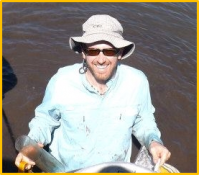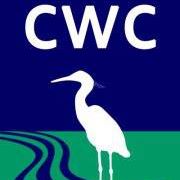 Q1. What is your educational background?
Q1. What is your educational background?
I have a B.A. in Biology and Environmental studies from Williams College, and a Ph.D. in Marine and Atmospheric Sciences from Stony Brook University. At Stony Brook, I studied coastal and estuarine ecology, particularly nutrient over-fertilization (eutrophication) and the responses of shellfish, sponges, and seagrass habitats to this nutrient loading.
Q2. What inspired you to become a scientist?
As far back as high school, I’ve always enjoyed being outdoors, looking at and studying living organisms and their environments. As a kid, my parents took us on trips to the beach on Cape Cod in Massachusetts and the Outer Banks of North Carolina, so I got a chance to enjoy the shore and all the amazing creatures that live there. As a college student, I studied marine biology, as well as history and literature of the sea, learned how to tie knots, and learned how to row and sail, in a special semester program at the Mystic Seaport Museum in Connecticut. This semester really set me on a career path to study and teach about marine ecosystems.
Q3. What is your role as a scientist for CWC?
I study the salt marsh habitat and the community of benthic organisms that live in the salt marsh, such as worms, snails, mussels, and small crustaceans. Many of these organisms act as decomposers, just like earthworms in a garden, and these small organisms are a link in the food web between marsh productivity and larger fish and crustaceans. In my current research I am comparing marsh shorelines that were oiled in 2010 with unoiled marshes to look for differences in the abundance or distribution of these small organisms.
Q4. What do you like the most about doing scientific research?
A research project is like a very long and complicated puzzle where you don’t even know what the puzzle is supposed to look like when you’re done! I enjoy going out in the field, collecting organisms and samples and taking measurements. I also enjoy number-crunching and statistics, which helps me look for patterns in large data-sets.
Q5. Can you describe any surprising findings you have come across so far?
The Louisiana coast is a very dynamic and changing ecosystem. We’ve got river flow, which varies by season and from year-to-year, we’ve also got storms, we’ve got sea-level rise and marsh erosion, we’ve got the growth and productivity of oysters, shrimp, fish, and crabs, and we’ve got multiple human activities layered on top of all that. We are still collecting samples and analyzing data, trying to describe the long-term impacts of the oil spill.

